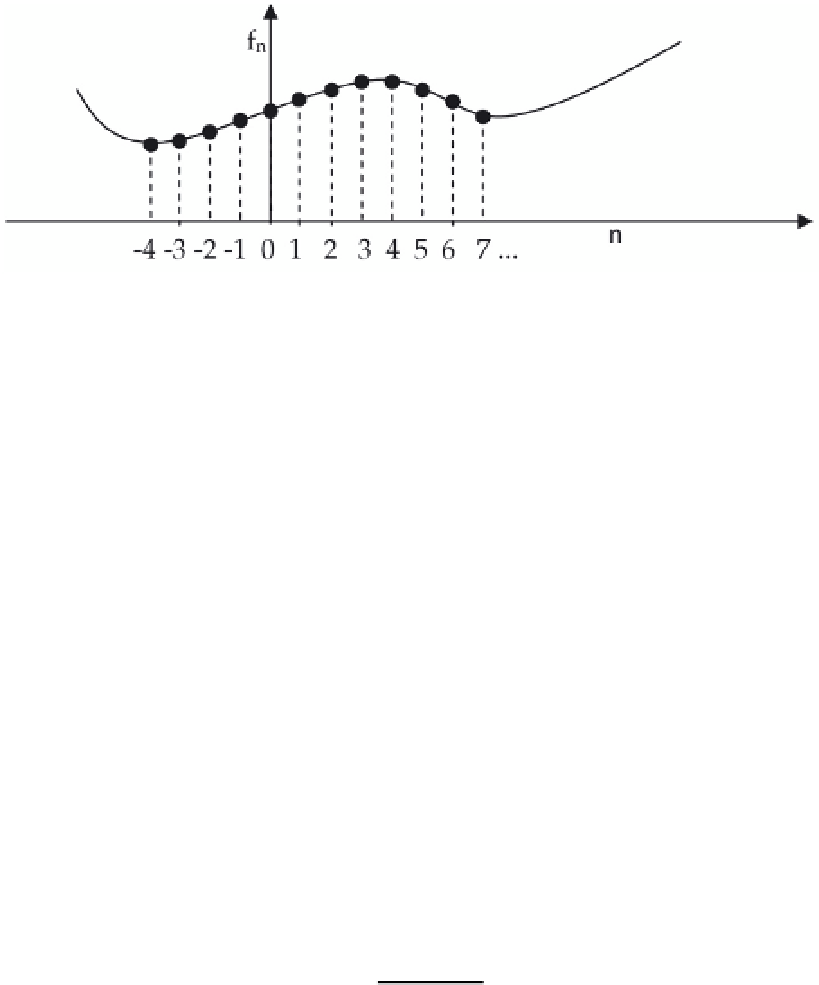Geoscience Reference
In-Depth Information
Fig. 1. Sampling a continuous signal f
n
To recover a function f(t) from its digital form, the sampling points must be sufficiently close
to each other. There is actually a maximum sampling period particular to the function
concerned, with which the complete recovery may be achieved.
According to the sampling theorem (or Shannon theorem), a function can be fully recovered
by the sampling process provided (a) it is a reasonably well-behaved function and (b) band-
limited (Bath, 1974).
Condition (a) implies that the function be continuous with no abnormal behaviour such as
discontinuities (sharp breaks or singularities). This condition is practically always fulfilled
in the case of functions representing natural processes (such as Laplacian fields). The band-
limitedness of a function as a second condition, refers to a function which possesses a
Fourier transform of non-zero value outside it. Most functions involving natural processes
also fulfill this condition.
If a function is digitized with equal sampling interval, τ, the period present in that function
which can be recovered by the process is 2τ, since we need a minimum of two sampling
intervals to define one period. The equivalent frequency (
=
) has a special significance
in the subject of digitization. The frequency, f
N
is referred to as the folding or Nyquist
frequency. The parameter, τ represents the maximum limit for the sampling period with
which we can fully specify a function whose lowest period is 2τ. However, the sampling cut-
off frequency, f
C
(=
) and so f
C
= 2f
N
.
It has been shown that the continuous function, f(t) which is band-limited can be
reconstructed from the digital values f
n
by using the formula (Papoulis, 1962; Bath, 1974)
()=∑
=
∑
(
)
()
Where ω
c
= 2πf
c
. We see that to recover the continuous function, f(t) from the digital version,
the n
th
sample is replaced by the sinc function (i.e. [sinω
c
t]/ω
c
t) which is scaled by the
sample value f
n
and placed at time, nτ. The scaled and shifted sinc functions are then added
together to give the original time function, f(t). Complete recovery also means running
values from n = -
∞
to +
∞
, which is practically impossible.
Aliasing is a kind of spectrum distortion which is brought about as a result of too coarse
sampling. Fine sampling (implying f
N
>f
c
) and critical sampling (implying f
N
= f
c
), produce
no aliasing effects. Coarse sampling (implying f
N
<f
c
) is undersampling and there will be
considerable overlap between adjacent spectra in the recovered analogue function. Thus to




Search WWH ::

Custom Search